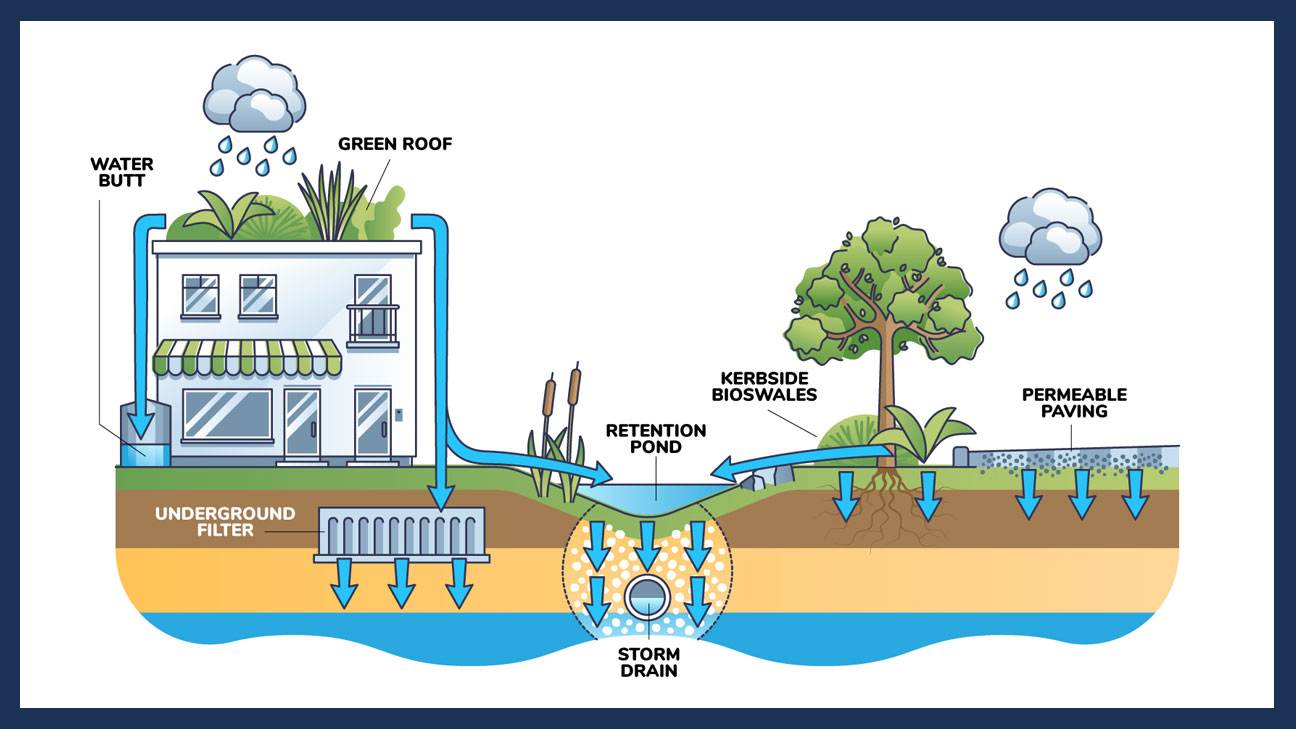The need for sustainable infrastructure is greater than ever. With its natural ability to prevent sewer overflow and replenish the water cycle with clean water, Sustainable Drainage Systems (SuDs) are becoming more prevelant.
This traditional sewer network that appeared in the 19th century was designed to cope with the rapid growth of urban populations and the diseases that thrived due to unsanitary conditions. By and large, it was a success with waste and rainwater flushed down into an underground system of pipes and culverts, away from the urban settlements. This led to a massive improvement in public health and living standards.
In more recent years, however, the needs of populated areas have evolved again. Climate change and population growth are causing an increasingly unsustainable strain on the sewer system, and more incidents of overspilling into rivers. Recently released figures for 2023 showed a shocking 54% increase in the number of sewage spills compared to 2022. Partly to blame for this rise in incidents is because the Met Office named 2023 as the 6th wettest year since its records began in 1836. With rainfall continuing to increase, a more sustainable approach is needed.
By mimicking natural drainage regimes, Sustainable drainage systems (SuDS) aim to reduce surface water flooding, improve water quality and enhance the biodiversity of the environment. SuDS achieve this by lowering water flow rates, storing surface water or providing infiltration into the ground, and reducing the transport of pollution to waterways.
What are SuDS?
SuDS are a collection of water management components that align modern drainage systems with the natural water cycle, mitigating the effects of severe rainfall through several methods. They often use built components that mimic natural features, to integrate with urban drainage systems as natively and efficiently as possible.
SuDS use a series of techniques that form a system, known as a management train, with components varying according to location and need. As water flows through this system, the speed of the water flow is controlled to remove pollutants, before being returned to the environment or retained for reuse. Typically, a system might contain the following:
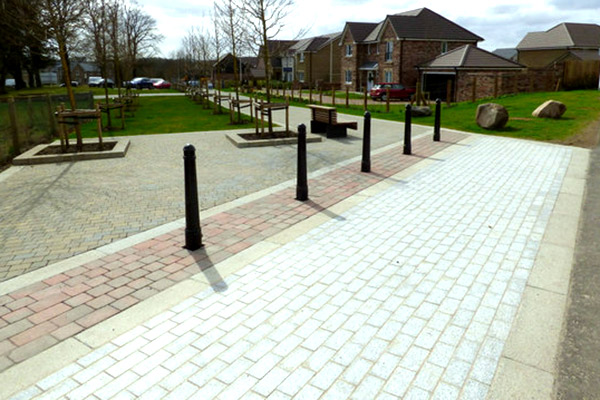
Source Control Methods
Managing water where it lands (known as source control) could be the preferred, more affordable, and simpler choice for numerous projects. Handling runoff at its origin reduces both water volume and potential contamination, thereby reducing the amount of SuDs components required further downstream. Source control components are typically situated within property boundaries and are maintained by property owners or managers. These can include features like green roofs, permeable surfaces, rainwater harvesting systems, and water butts.
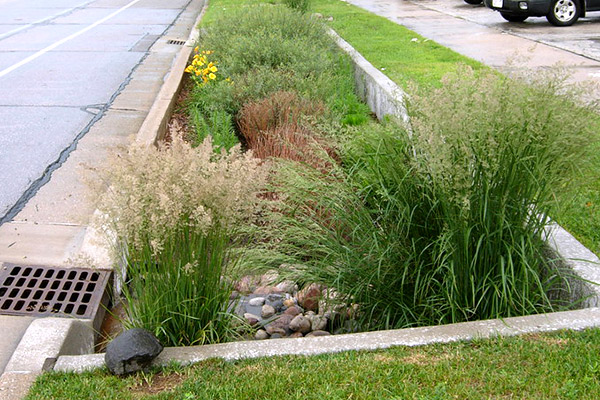
Pre-treatment Components
The transfer of surface water between components is an essential part of SuDS planning, and by using natural, built channels such as vegetated swales, rills or filter trenches, the water flow can be slowed down to avoid flooding at its destination, and contaminants can be filtered off as it makes its way towards retention and infiltration components. In general, the greater the number of components used in a series, the better the performance is likely to be, and the lower the risk of overall system failure during extreme events.
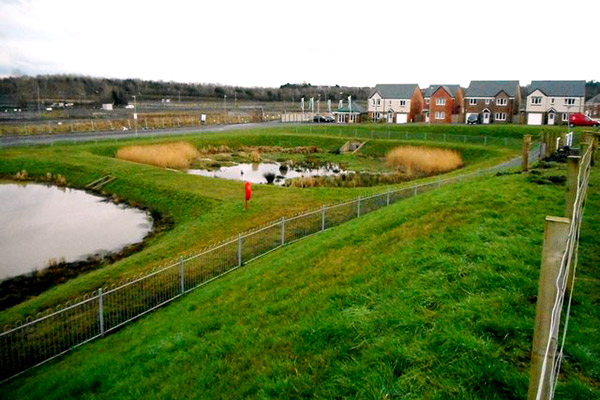
Retention Systems
These SuDS components are designed to either provide storage, through the retention of surface water runoff, or attenuation through the detention of surface water runoff. Retention is primarily provided on the surface through ponds, but wetlands and basins are also used. These ponds have a permanent water level which can rise during storm events as they receive the excess not dealt with by source-controlled components, holding the water to prevent system flooding.
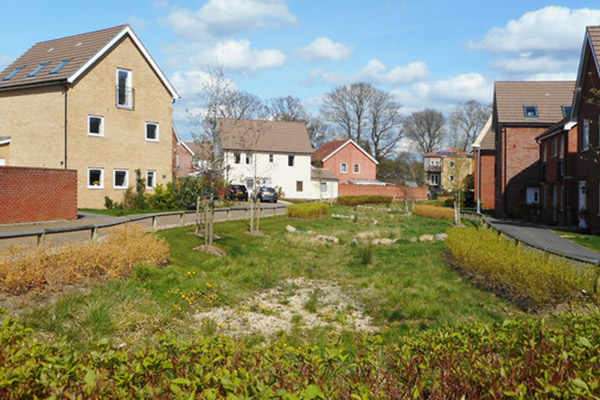
Infiltration Components
Soakaways stand as the prevalent infiltration component in the UK. They collect runoff from individual homes or developments and facilitate its effective absorption into the nearby soil. Typically, drainage from individual properties is directed towards large square or rectangular cavities filled with rubble, located beneath lawns. In a soakaway, water permeates through the surface into the gravel sub-base beneath, temporarily retaining water before enabling it to either seep into the ground or drain to an outfall. A full assessment must be carried out in advance to ensure there is no pollution of the water table below when the water reaches it.
There is no definitive SuDs management train, as different locations have different needs and supporting geography, which is why SuDS offers a wide range of components that integrate with existing drainage infrastructure, and can vary in type and scale. In whichever way the management train is comprised, the twin primary benefits of SuDs are always key factors – water retention to avoid sewer flooding, and water quality to reduce environmental pollution.
What Are The Benefits of SuDS?
Flood Risk Management
SuDS mitigates flood risks by temporarily holding water or slowing its flow during extreme weather events.
Water Quality Enhancement
Natural filtration methods remove pollutants, preventing overflow into watercourses and improving potable water supplies.
Biodiversity and Ecology
SuDS components like ponds and wetlands attract diverse wildlife, benefiting local ecosystems and promoting tourism and recreation.
Cost Savings
Many systems such as permeable paving are cost-effective to install and require minimal upkeep, offering long-term savings.
SuDS are becoming more popular as the need for a more sustainable approach to water management intensifies. Heavy rainfall events of up to 20mm/hr are predicted to happen with four times the frequency that they do now by 2080. Exisiting drainage systems were designed to cope with the weather conditions of the time and place they were built. Goverment policy was introduced in 2015 to include non-statutory standards for SuDS, and stated that all developments should include SuDS, espcially in larger buildings.
Sustainability is at the core of our drainage approach, and MRMS provides a full turnkey approach that assesses, designs, implements and maintains the perfect management train of components for your site or surrounding location.
